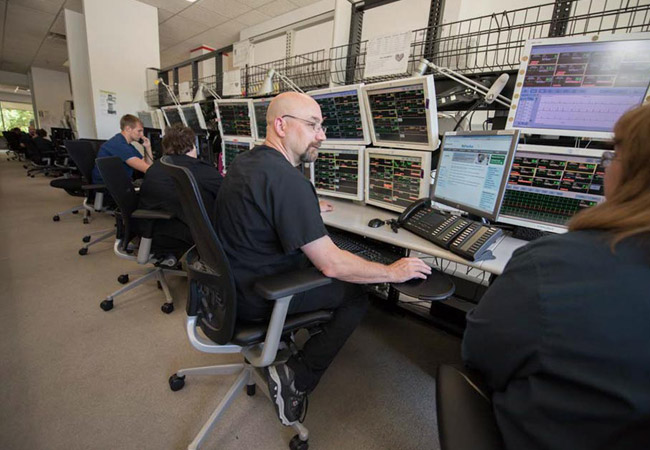A new study suggests the use of an off-site cardiac telemetry central monitoring unit (CMU) could improve telemetry alarms for non-intensive care unit patients and reduce the number of monitored patients—without increasing cardiopulmonary arrest events.
The study, published August 2 in the Journal of the American Medical Association, studied all non-intensive care unit patients at Cleveland Clinic and three other regional hospitals over a period of thirteen months. An off-site CMU applied "standardized cardiac telemetry" for 99,048 patients during that time.
The Data
Among the study's population, emergency response team (ERT) activation occurred for 3,243 patients. 979 of those patients had rhythm or rate changes occurring up to one hour prior to the ERT activation. The CMU detected and provided accurate notification for 772—or 79 percent—of those events, according to the study's abstract.
For 105 patients, the CMU provided "discretionary direct ERT notification" for events requiring urgent clinical intervention, reads the abstract. Slightly more than one in four of those patients went on to experience cardiopulmonary arrest events—27 patients, or 26 percent. Return to circulation was achieved in 25 of those patients, or 93 percent.
Telemetry standardization also reduced the number of patients monitored by 15.5 percent per week through eliminating low-risk patients.
How the Central Monitoring Unit Works
The study's model used one monitoring technician to provide continuous cardiac monitoring for up to 48 patients, providing blood pressure, pulse oximetry, and respiratory rate notifications on request, according to the JAMA media release. A lead technician also provided oversight and supervision for real-time rhythm interpretation.

The result? Fewer distractions, say the study's authors.
"Normal hospital activities occurring at the nursing station might potentially distract on-site personnel from continuous vigilant patient monitoring, in addition to the possibility of vigilance being divided by other on-site duties," write the authors.
Centralized and standardized telemetry monitoring with direct supervision results in more vigilant and accurate monitoring, suggest the authors. "Off-site monitoring can minimize noise distraction from hospital activity, centralize staffing, and allow standardized practices," reads the release.
Standardized, Centralized Monitoring Reduces Alarm Fatigue
The significance, says the authors, lies in alarm fatigue.
In recent years, alarm fatigue has entered the spotlight as a major concern for patient safety. In 2014, monitoring alarms held the top spot of the ECRI Institute's top ten health technology hazards.
In previous studies involving "traditional on-site monitoring," reads the release, "more than 90 percent of alarms were without immediate clinical relevance and contributed to clinical desensitization." The ECRI Institute report summarizes the danger—nursing staff "become desensitized, possibly missing an important alarm because too many previous alarms proved to be insignificant."
This alarm fatigue could be a big part of the reason that slightly less than one in four adults survived an in-hospital cardiac arrest in 2013. (American Heart Association)
Cleveland Clinic electrophysiologist Daniel J. Cantillon, MD cites a more encouraging one-in-four statistic from their JAMA study. "We showed there's about a one in four chance that a patient our technicians are calling about will have a cardiac arrest," he says to Cleveland Clinic's ConsultQD. "That's how good they are at spotting trouble."
Their centralized, standardized technicians are good and still getting better, says Cleveland Clinic. "Since the study's completion, the rate of accurate detection and notification of an impending arrest has risen further," reports ConsultQD, "from 79 percent to 84 percent."
